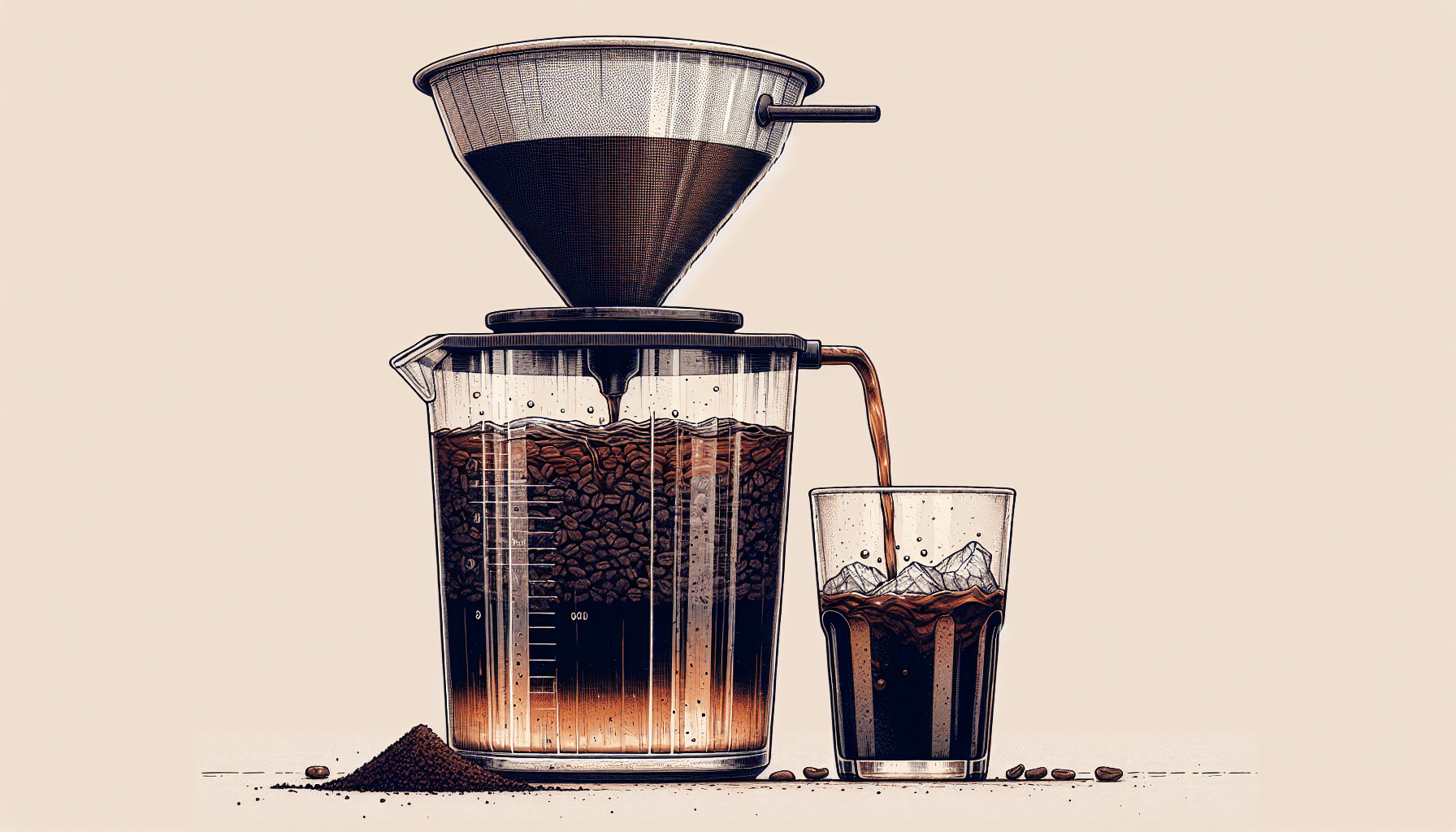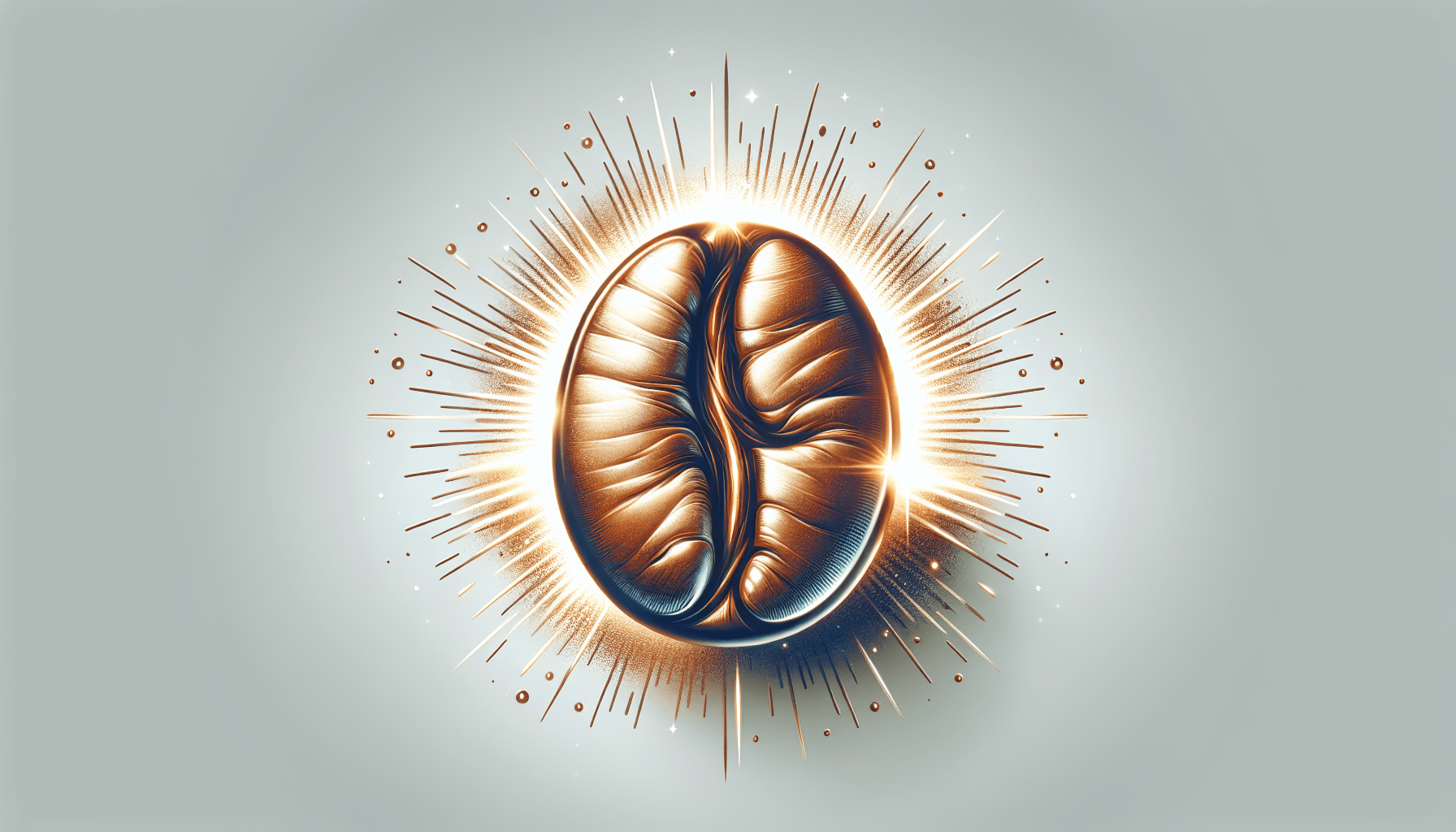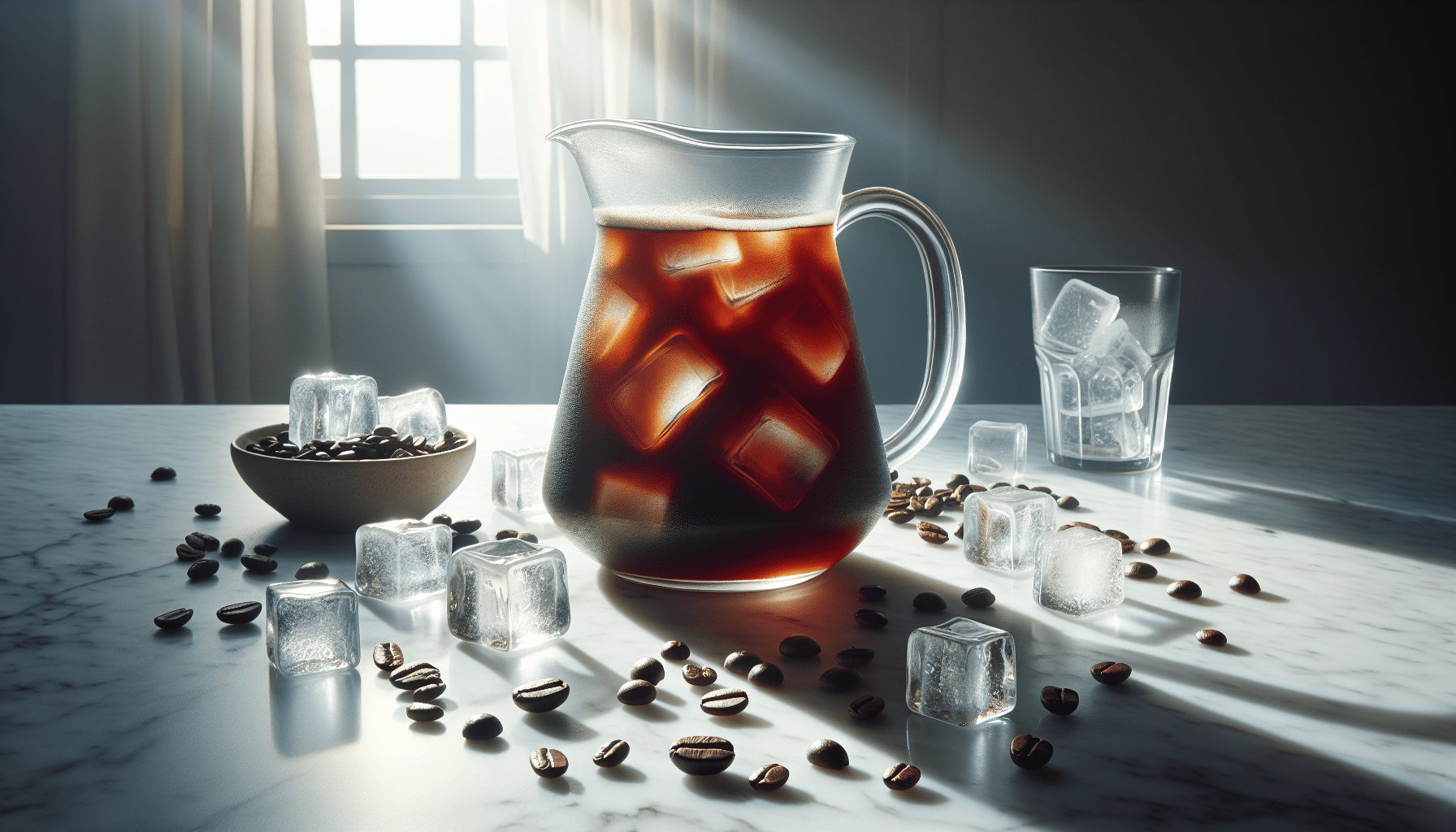Have you ever wondered how exactly a cold brew maker does its magic? Well, wonder no more! In this article, we will explore the fascinating process behind the scenes of a cold brew maker and uncover the secrets to achieving that smooth, rich cup of cold brewed coffee. From the steeping time to the ideal grind size, we will unravel all the key components that make a cold brew maker tick. So prepare to embark on a journey into the realm of cold brewing, where deliciously refreshing coffee awaits!
Overview of Cold Brew Coffee
Cold brew coffee is a popular beverage that has gained significant popularity in recent years. It offers a unique and refreshing way to enjoy coffee, especially during the hot summer months. Cold brew coffee is different from regular coffee in terms of how it is brewed and its flavor profile. In this article, we will explore what cold brew coffee is, why it is popular, how it differs from regular coffee, and how you can make it at home using a cold brew maker.
What is cold brew coffee?
Cold brew coffee is a type of coffee that is brewed without using heat. Instead, it is made by steeping ground coffee beans in cold water for an extended period, usually 12 to 24 hours. The slow extraction process allows the coffee grounds to release their flavors gradually, resulting in a smooth and less acidic cup of coffee.
Why is cold brew coffee popular?
Cold brew coffee has gained popularity for several reasons. Firstly, it offers a different flavor profile compared to regular coffee. The slow extraction process produces a coffee that is less acidic and less bitter, making it appealing to those who find traditional coffee too harsh. Additionally, cold brew coffee can be served over ice, making it a refreshing and enjoyable beverage during the summer months. The smooth and mellow flavor of cold brew also makes it a popular choice for those who prefer a gentler coffee experience.
How is cold brew different from regular coffee?
Cold brew coffee differs from regular coffee in several ways. Firstly, the brewing method is different. Cold brew is made by steeping coffee grounds in cold water for an extended period, while regular coffee is brewed using hot water. As a result, cold brew coffee is less acidic and has a smoother flavor profile compared to regular coffee. Furthermore, cold brew is typically served cold or over ice, while regular coffee is served hot.
Components of a Cold Brew Maker
To make cold brew coffee at home, you will need a cold brew maker. A cold brew maker typically consists of several components that work together to create a perfect cup of cold brew coffee.
Container
The container is where you will place the coffee grounds and water to brew the coffee. It is usually made of glass or BPA-free plastic and comes in various sizes to accommodate different brewing volumes.
Filter
The filter is an essential component of a cold brew maker as it separates the coffee grounds from the liquid. It can be made of stainless steel, paper, or a mesh material that allows the liquid to pass through while trapping the coffee grounds.
Lid
The lid is used to cover the container during the steeping process. It helps to maintain the temperature and prevent any contaminants from entering the brew.
Spout
The spout is a convenient feature that allows you to pour the brewed coffee into your cup or a separate container without any spills or mess.
Indicator markings
Some cold brew makers have indicator markings on the side of the container to help you measure the amount of water and coffee grounds accurately. This ensures consistency in the brewing process and helps you achieve the desired coffee strength.
Step-by-step Process of Making Cold Brew Coffee
Now that we have a basic understanding of cold brew coffee and the components of a cold brew maker, let’s take a closer look at the step-by-step process of making cold brew coffee at home.
Grind the coffee beans
Start by grinding your coffee beans to a coarse grind size. This helps to achieve optimal extraction and prevents the coffee from becoming bitter or over-extracted.
Add ground coffee to the container
Once you have ground your coffee beans, add the desired amount of ground coffee to your cold brew maker’s container. The recommended coffee-to-water ratio is usually 1:8, but you can adjust it to your taste preferences.
Pour cold water over the coffee grounds
After adding the coffee grounds, slowly pour cold water over them. Make sure that all the coffee grounds are fully saturated and submerged in water.
Stir the mixture
Gently stir the coffee and water mixture to ensure that the coffee grounds are evenly distributed and saturated. This helps to enhance the extraction process.
Allow it to steep
Cover the cold brew maker with the lid and let it steep at room temperature for 12 to 24 hours. The steeping time can vary depending on your preference and the desired strength of your cold brew coffee.
Filter the brewed coffee
Once the steeping process is complete, remove the filter from the cold brew maker, allowing the liquid to pass through and separate from the coffee grounds. This will result in a smooth and flavorful cold brew concentrate.
Serve and enjoy
Your cold brew coffee is now ready to be served. You can dilute the concentrate with water or milk according to your taste preferences. Serve it over ice for a refreshing summer drink or enjoy it as a concentrated shot for a bolder flavor.
How Cold Brew Maker Works
To understand how a cold brew maker works, let’s break down the process into three main components: steeping, pressure or vacuum extraction, and filtering.
Steeping
Steeping is the process of soaking the coffee grounds in water for an extended period. During this time, the water gradually extracts the flavor and compounds from the coffee grounds, resulting in a strong and flavorful coffee concentrate. Steeping is an essential step in the cold brew process as it allows for the gradual release of flavors without the need for heat.
Pressure or Vacuum Extraction
Certain cold brew makers use pressure or vacuum extraction methods to enhance the brewing process. This involves creating pressure or vacuum within the brewing chamber, which increases the extraction efficiency and shortens the brewing time. This method is particularly useful for those who want to enjoy cold brew coffee quickly without sacrificing flavor.
Filtering
Filtering is the final step in the cold brew process. It involves separating the liquid from the coffee grounds to achieve a smooth and sediment-free final product. The filtering method can vary depending on the type of cold brew maker used. Gravity filtering uses gravity to allow the liquid to pass through the filter, while pressure filtering uses additional pressure to expedite the filtration process.
Steeping Process
What is steeping?
Steeping is the process of extracting flavors and compounds from coffee grounds by allowing them to soak in water over an extended period. During steeping, the water gradually breaks down the coffee particles, resulting in a concentrated and flavorful liquid.
Why is steeping important in cold brew?
Steeping is crucial in cold brew coffee as it allows for a gentle and gradual extraction, resulting in a smoother and less acidic cup of coffee. The extended steeping time also allows for a higher degree of solubility, ensuring that all the desirable flavors are extracted from the coffee grounds.
Duration of steeping
The duration of steeping can vary depending on personal preferences and desired coffee strength. Generally, a steeping time of 12 to 24 hours is recommended. However, some coffee enthusiasts may choose to steep their cold brew for even longer periods to achieve a more intense flavor.
Temperature during steeping
Steeping in cold brew coffee is done at room temperature or in the refrigerator. Unlike hot brewing methods, cold brew does not rely on heat to initiate the extraction process. Steeping at a lower temperature helps to minimize the release of bitter compounds, resulting in a smoother and more balanced coffee flavor.
Pressure or Vacuum Extraction
What is pressure or vacuum extraction?
Pressure or vacuum extraction is a method used in certain cold brew makers to enhance the extraction process. It involves creating pressure or vacuum within the brewing chamber to increase the efficiency of flavor extraction from the coffee grounds. This method allows for a faster and more concentrated cold brew coffee.
How does it affect the cold brew extraction?
Pressure or vacuum extraction in cold brew makers speeds up the extraction process by increasing the contact between the coffee grounds and water. This leads to quicker flavor extraction, resulting in a stronger and more robust cold brew concentrate. The use of pressure or vacuum also helps to reduce the steeping time, making it a convenient option for those who want their cold brew coffee in a shorter timeframe.
Types of cold brew makers using this method
There are various types of cold brew makers that utilize pressure or vacuum extraction. Some models have built-in mechanisms that create pressure or vacuum within the brewing chamber, while others make use of external tools, such as a vacuum pump, to achieve the desired extraction. Regardless of the specific design, these cold brew makers offer a quicker brewing time and a more intense coffee flavor.
Filtering the Brewed Coffee
What is the purpose of filtering?
Filtering is an essential step in the cold brew process as it separates the liquid from the coffee grounds, resulting in a smooth and sediment-free coffee concentrate. The purpose of filtering is to remove any leftover particles and oils that may affect the taste and appearance of the final product.
Different types of filters used
There are several types of filters that can be used in cold brew makers. Stainless steel filters are popular choices as they are durable, reusable, and easy to clean. Paper filters can also be used and are advantageous for those who prefer a clean and sediment-free cold brew. Some cold brew makers come with built-in filters, eliminating the need for additional accessories.
Filtering methods – gravity or pressure
Filtering methods can vary depending on the type of cold brew maker used. Gravity filtering relies on the force of gravity to allow the liquid to pass through the filter, separating it from the coffee grounds. Pressure filtering, on the other hand, applies additional pressure to expedite the filtration process, resulting in a faster and more efficient separation of the liquid and grounds.
Importance of filtering for smooth coffee
Filtering plays a crucial role in achieving a smooth and mellow cold brew coffee. It ensures that no unwanted particles or sediments end up in the final product, resulting in a clean and enjoyable coffee experience. Proper filtration also helps to remove any oils or compounds that may contribute to bitterness or cloudiness in the cold brew.
Tips for Using a Cold Brew Maker
Using a cold brew maker can be a fun and rewarding experience. Here are some tips to help you make the most out of your cold brew maker and achieve the perfect cold brew coffee:
Use coarsely ground coffee
When making cold brew coffee, it is essential to use coarsely ground coffee beans. This ensures that the water can flow freely through the grounds and allows for a proper extraction without over-extracting or making the coffee bitter.
Experiment with coffee to water ratio
The coffee to water ratio is a crucial factor in determining the strength and flavor of your cold brew coffee. The recommended ratio is usually 1:8, which means one part coffee to eight parts water by weight. However, you can adjust this ratio to your taste preferences. If you prefer a stronger coffee, increase the amount of coffee grounds, and decrease the amount of water.
Find the right brewing time
The steeping time can significantly impact the flavor profile of your cold brew coffee. Experiment with different steeping times to find the one that suits your taste preferences. Start with a steeping time of 12 to 14 hours and adjust it accordingly based on the strength and flavor you desire.
Consider using cold or filtered water
The quality of water used in cold brew coffee can affect the overall taste and clarity of the final product. Consider using cold or filtered water to avoid any undesirable flavors or impurities that may alter the taste of your cold brew coffee.
Store leftover cold brew properly
If you have leftover cold brew, it’s important to store it properly to maintain its freshness and flavor. Transfer the cold brew into an airtight container and store it in the refrigerator. Cold brew can typically stay fresh for up to a week, but the flavor may start to degrade after a few days.
Benefits of Using a Cold Brew Maker
Using a cold brew maker offers several benefits that make it an attractive option for coffee enthusiasts. Here are some of the key advantages:
Less acidity and bitterness
Cold brew coffee is known for its smooth and less acidic flavor profile. The cold water extraction method reduces the release of acids and bitter compounds, resulting in a gentler and more enjoyable coffee experience.
Smooth and mellow flavor
The slow extraction process of cold brew coffee produces a beverage with a smooth, velvety texture and a mellow flavor profile. This makes it an excellent choice for those who prefer a less intense or less bitter coffee taste.
Lower caffeine content
Cold brew coffee usually contains less caffeine than regular coffee. The extended steeping time allows for a gradual extraction of caffeine, resulting in a less potent caffeine content. This makes cold brew a suitable option for those who are sensitive to caffeine or prefer a milder coffee experience.
Convenient and time-saving
Using a cold brew maker at home offers convenience and saves time. The steeping process requires minimal effort and can be done overnight. You can wake up to a ready-to-drink cold brew coffee in the morning, eliminating the need for brewing coffee using traditional methods.
Versatile for various coffee beverages
Cold brew coffee can be enjoyed in various ways. It can be diluted with water or milk to create a refreshing iced coffee, or used as a base for other coffee beverages such as lattes, mochas, or even cocktails. The mild and smooth flavor of cold brew makes it a versatile choice for creating different coffee creations.
Conclusion
In conclusion, cold brew coffee offers a unique and refreshing way to enjoy coffee. Its smooth and mellow flavor profile, coupled with its convenience and versatility, has contributed to its growing popularity. By using a cold brew maker, you can easily make your own cold brew coffee at home. The step-by-step process involves grinding the coffee beans, adding them to the cold brew maker, pouring cold water, allowing it to steep, filtering the brewed coffee, and finally, serving and enjoying the cold brew. So why not give it a try? Grab a cold brew maker, follow the steps outlined in this article, and embark on a delightful cold brew coffee journey in the comfort of your own home. Cheers!




